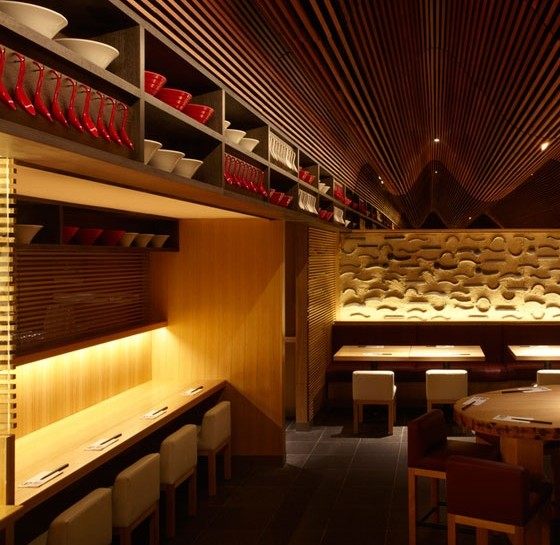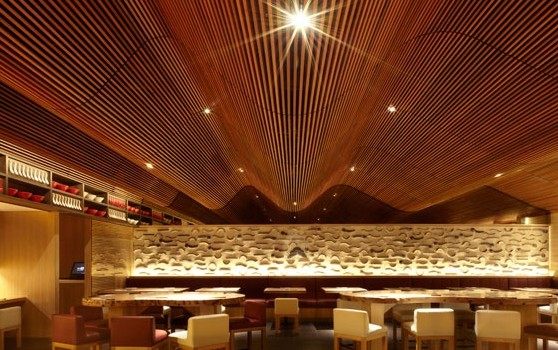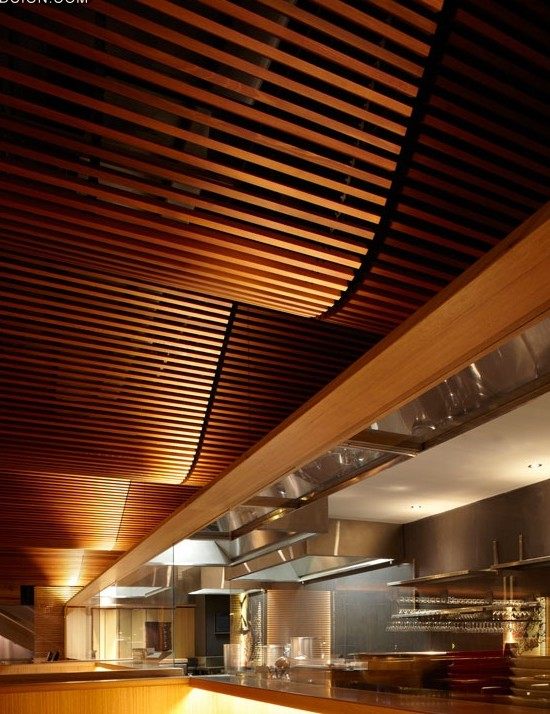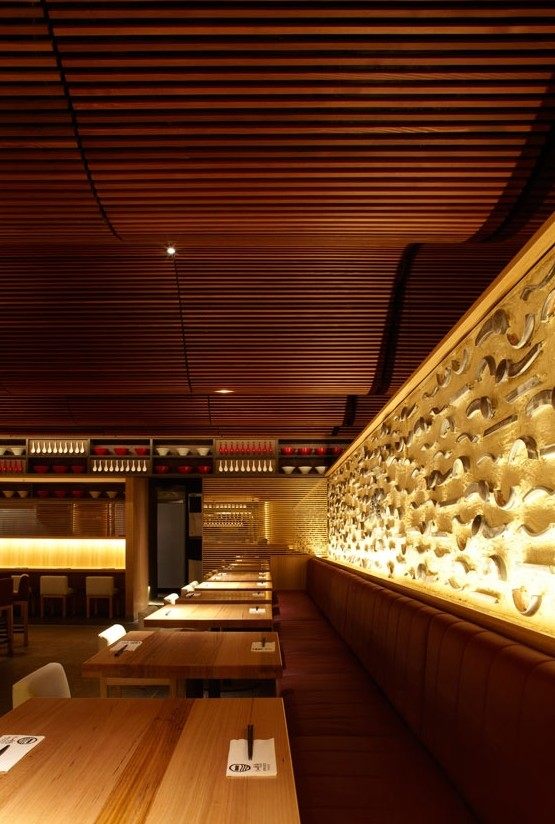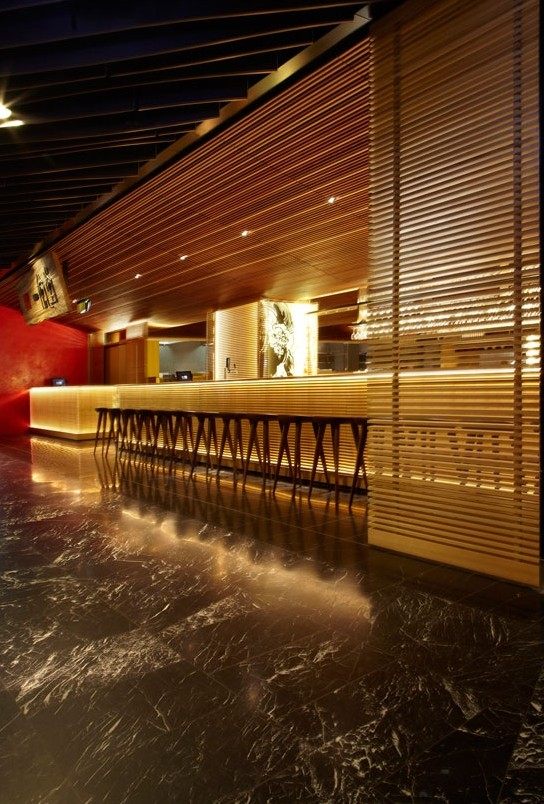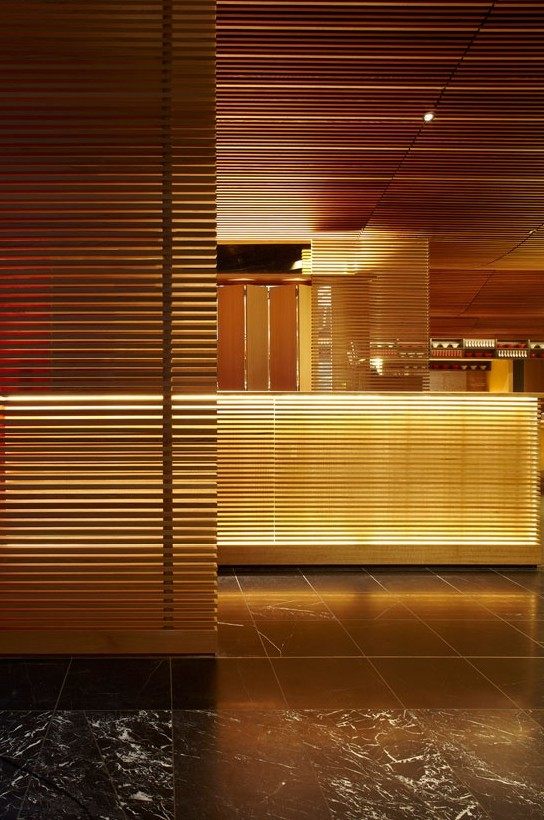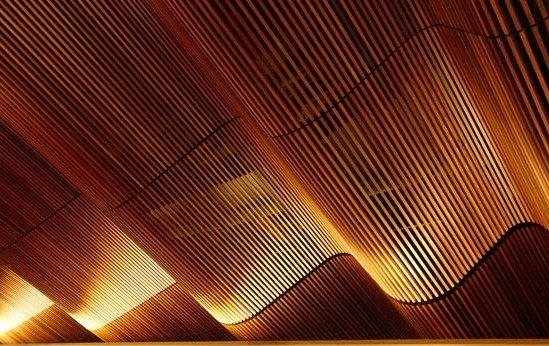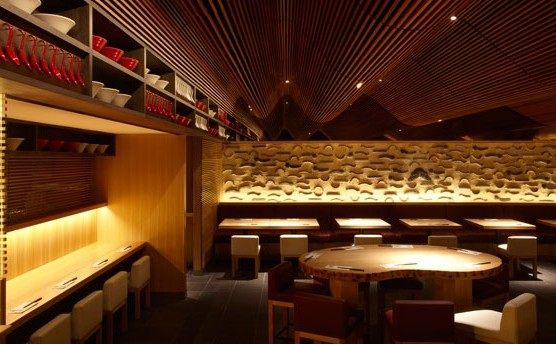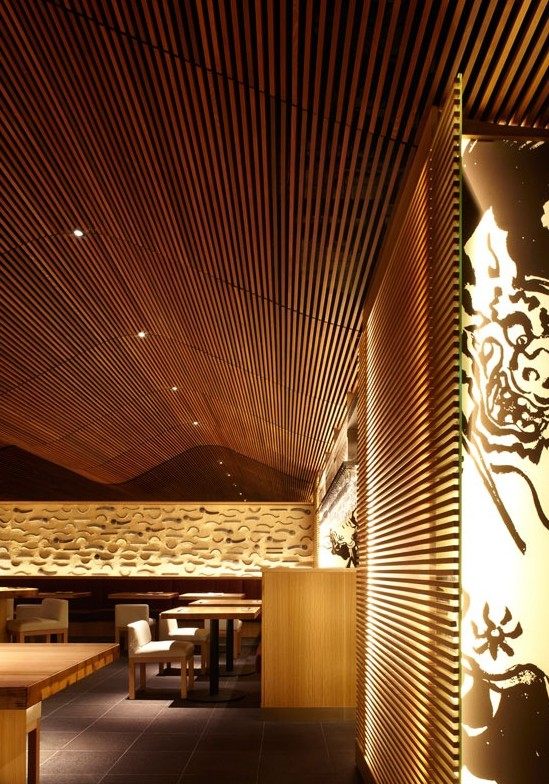Koichi Takada Architects : Restaurant IppudoA Sydney en Australie, l’agence japonaise Koichi Takada a imaginé l’aménagement d’ “Ippudo”, un restaurant de nouilles asiatiques où le bois et la culture japonaise sont à l’honneur.
L’architecture est bardée de vagues de bois organiques et chaleureuses, dans un environnement épuré et sobre.
Sur ce projet, l’agence Koichi Takada Architects précisent :
“Ippudo is designed to introduce the Japanese noodle culture into Australian dining. More than just a restaurant, Ippudo is a gallery of the noodle culture, displaying traditional noodle bowls and spoons, and a traditional clay feature wall from Hakata, the birthplace of Ippudo. The enthusiasm of the staff is reflected in their greetings and service – all becoming part of the Ippudo dining experience.
The challenge of the restaurant was the undulating timber ceiling. It represents the ‘gust of wind’, the literal Japanese meaning of Ippudo. It tells the story; a narrative of Ippudo’s history, and allows an insight into the traditions of Japanese dining. Ippudo allows you to escape – the atmosphere is inviting. The light, finishes and timber screens create texture and depth.
Ippudo is known for the ‘crafted’ dishes. The noodle making process is part of the experience, with photos and books about the routine and recipe. This meticulous attention to detail carries from the food to the interior, where great detail is seen in the application of natural finishes. The interior is exciting and natural – the gentle timber curves are welcoming, the overall experience is a unique and modern interpretation of dining in Japan.
The driving factor of the interior design was to encompass the passion and integrity of the Ippudo ‘family’, while creating an exciting and timeless design. As the first Ippudo restaurant in Australia, the design seeks to create a warm and inviting interior that not only enhances the dining experience but also displays a modern interpretation of the traditional Japanese dining settings.
The curved timber ceiling was a design challenge with high reward. As the feature of the restaurant interior, the geometry and quality of the finished product was paramount. The timber screen profiles were designed as a modulated system, enabling them to be prefabricated. Each panel incorporates a ‘flexible’ aluminium frame, which could be bent in-situ. Plywood ribs, cut using CNC technology, allowed a smooth geometry, to which each panel was curved around and fixed, achieving an efficient installation process, and also allowing minimal wastage.
The construction system ensured that each piece fit near perfectly within the building and to each other. With the help of bronze facing mirror, the effect is of a continual and dramatic ceiling space, creating a high impact interior. The continued success since the restaurants opening is proof of successful design and social sustainability.”
Photographies : Sharrin Rees

